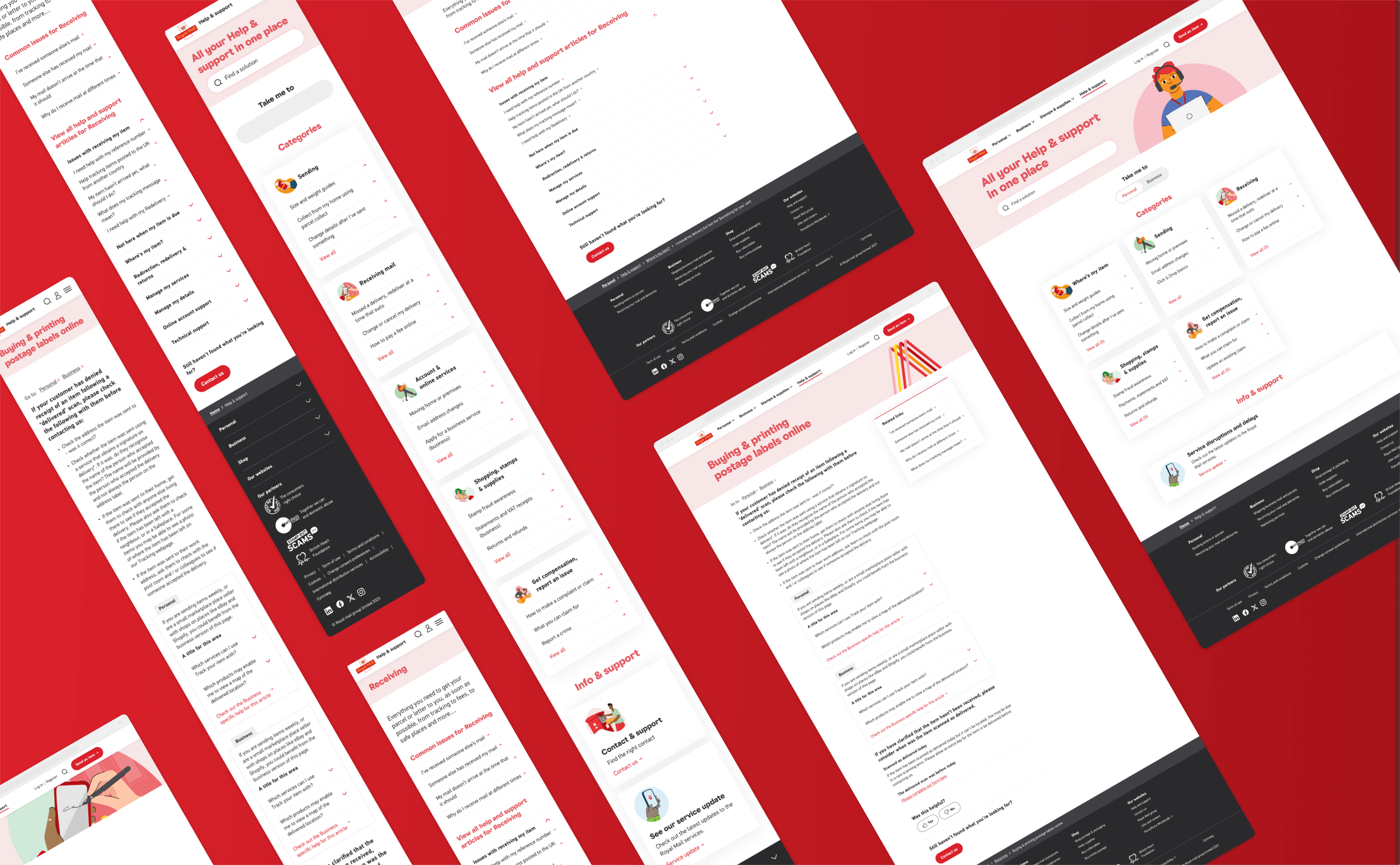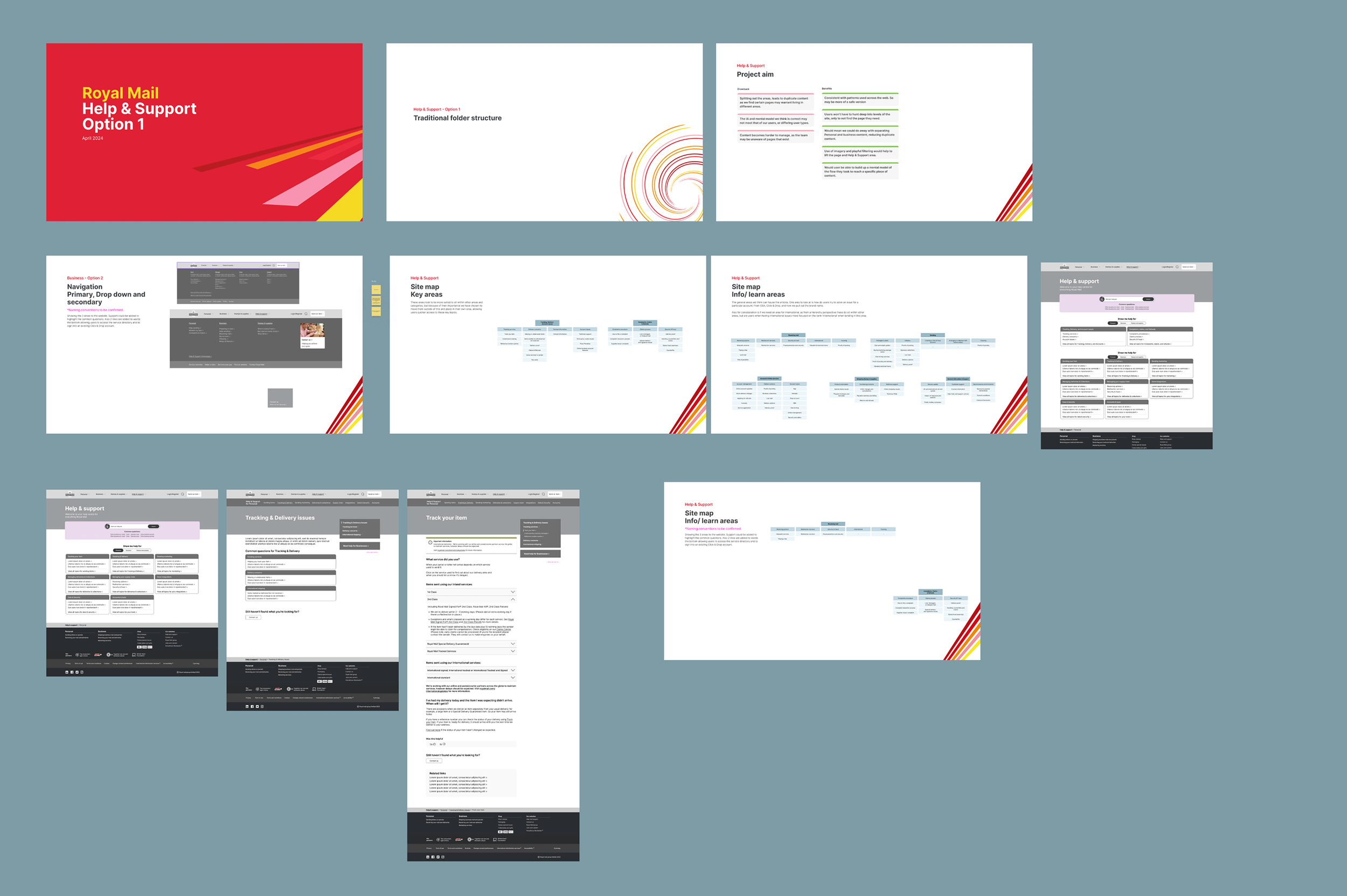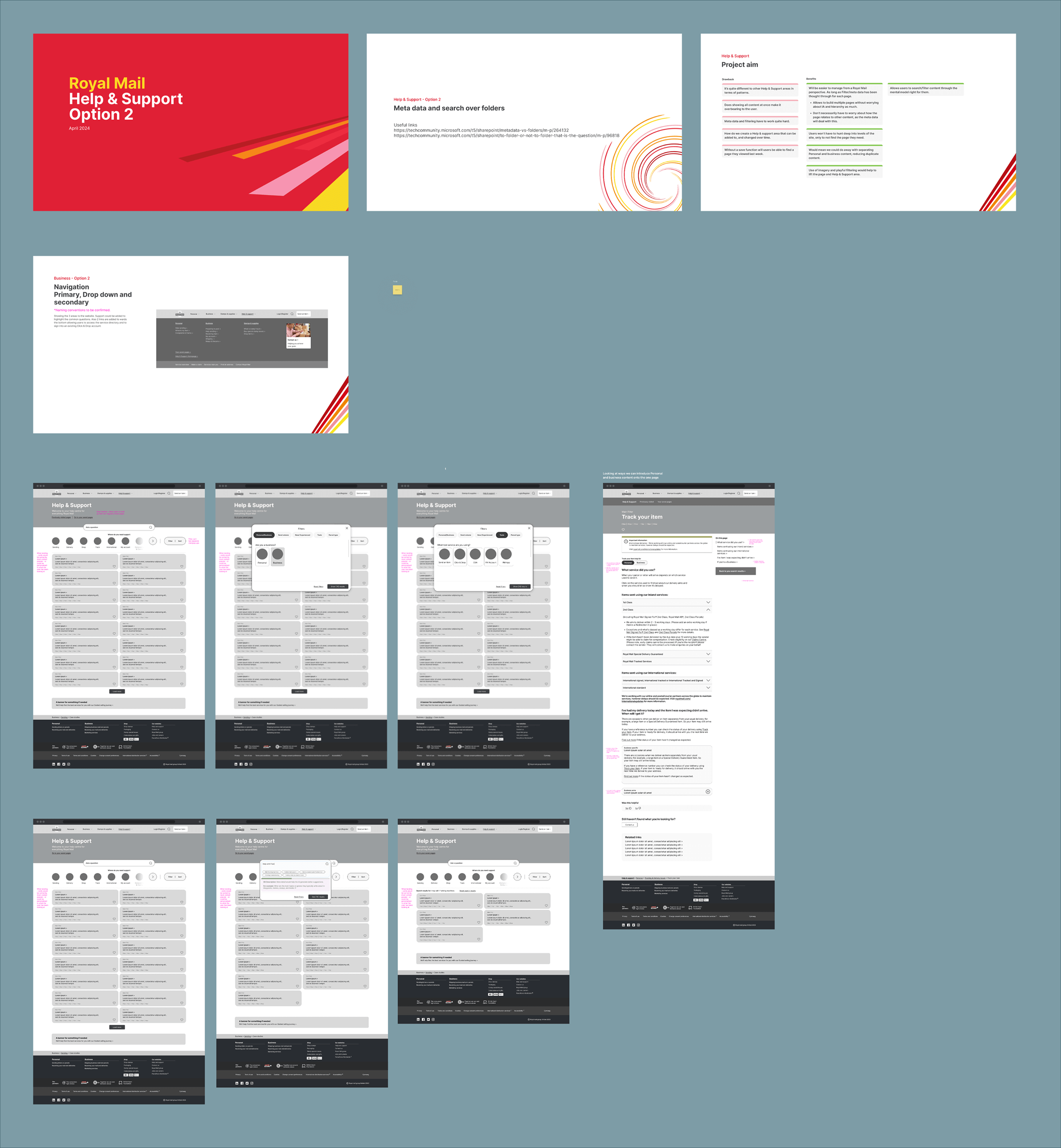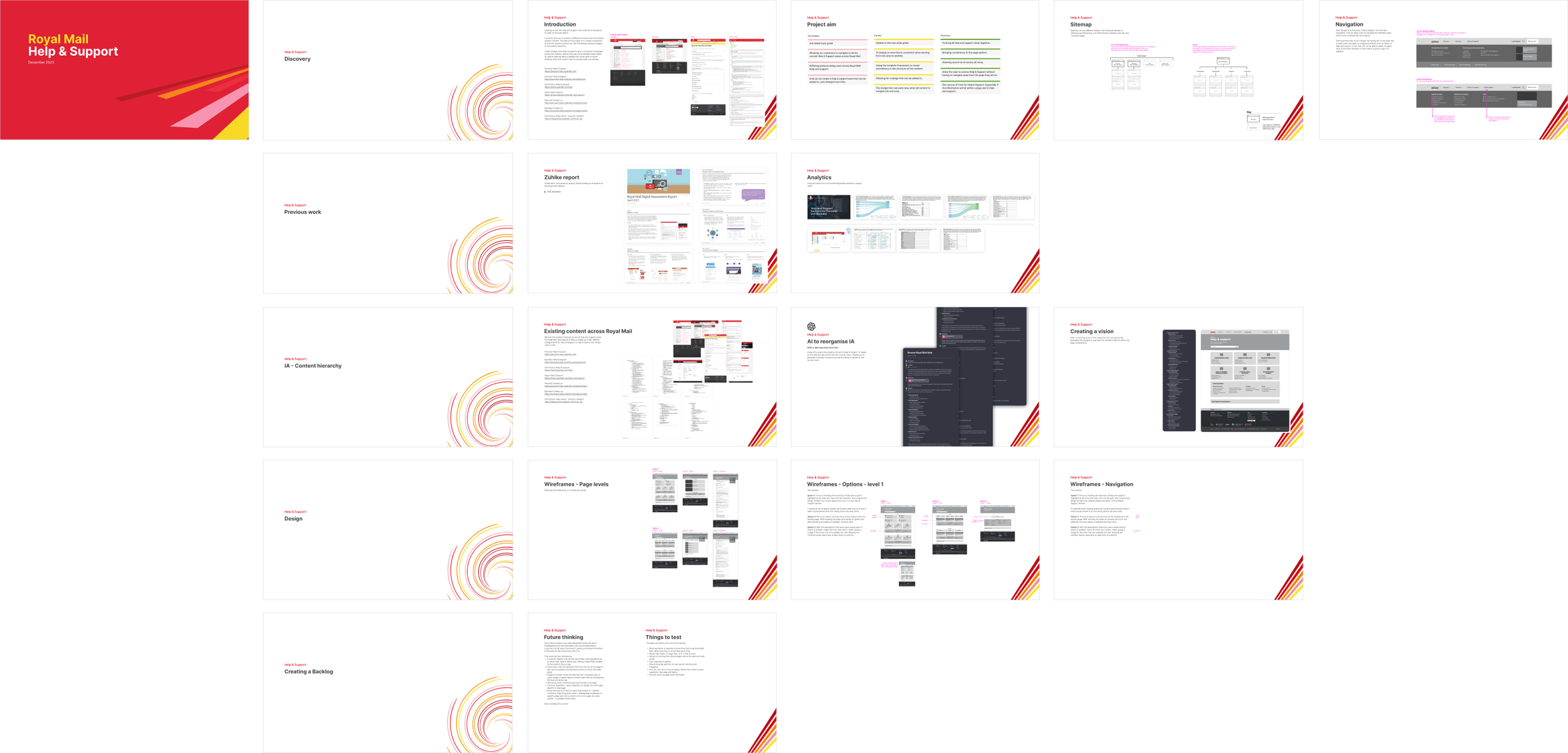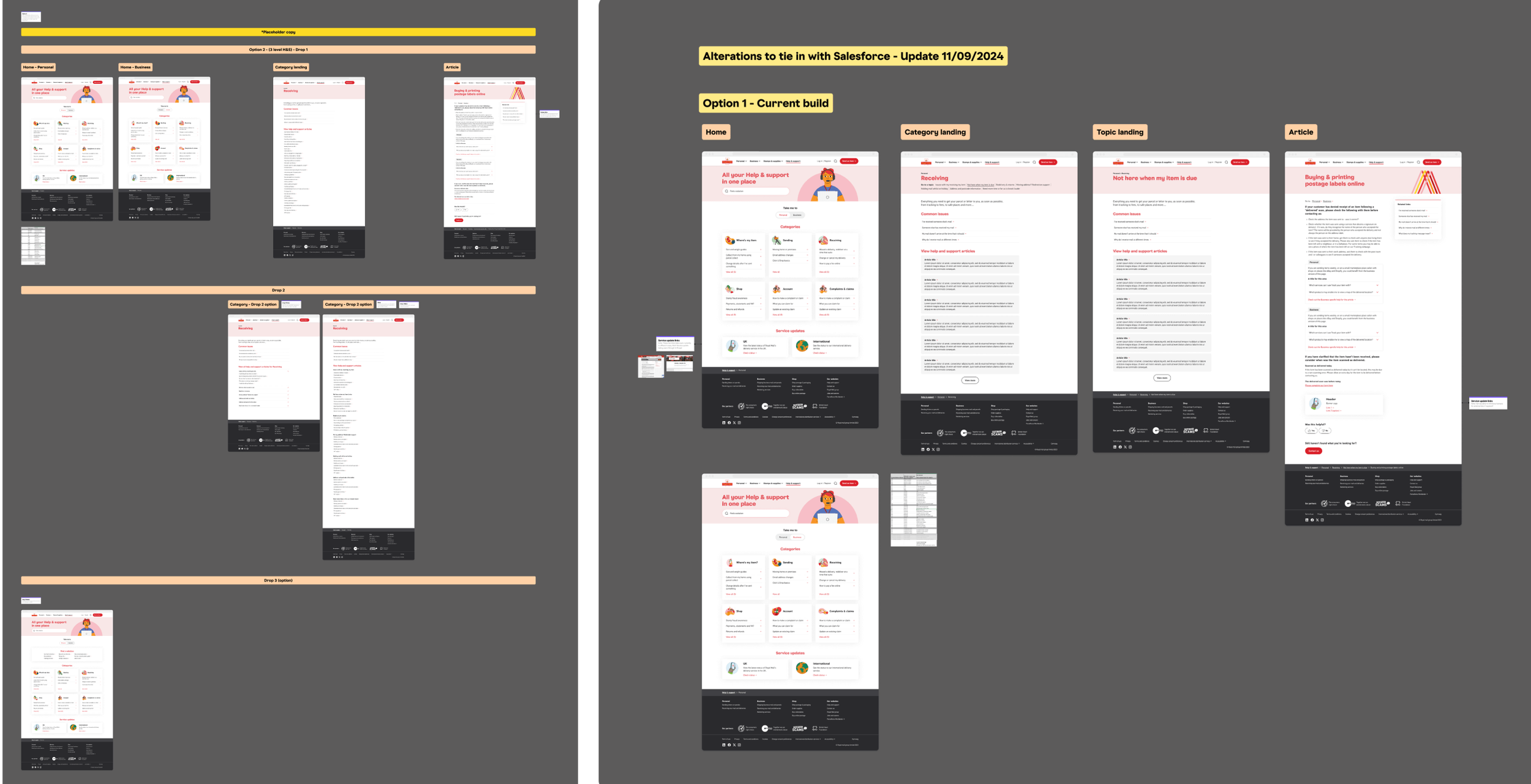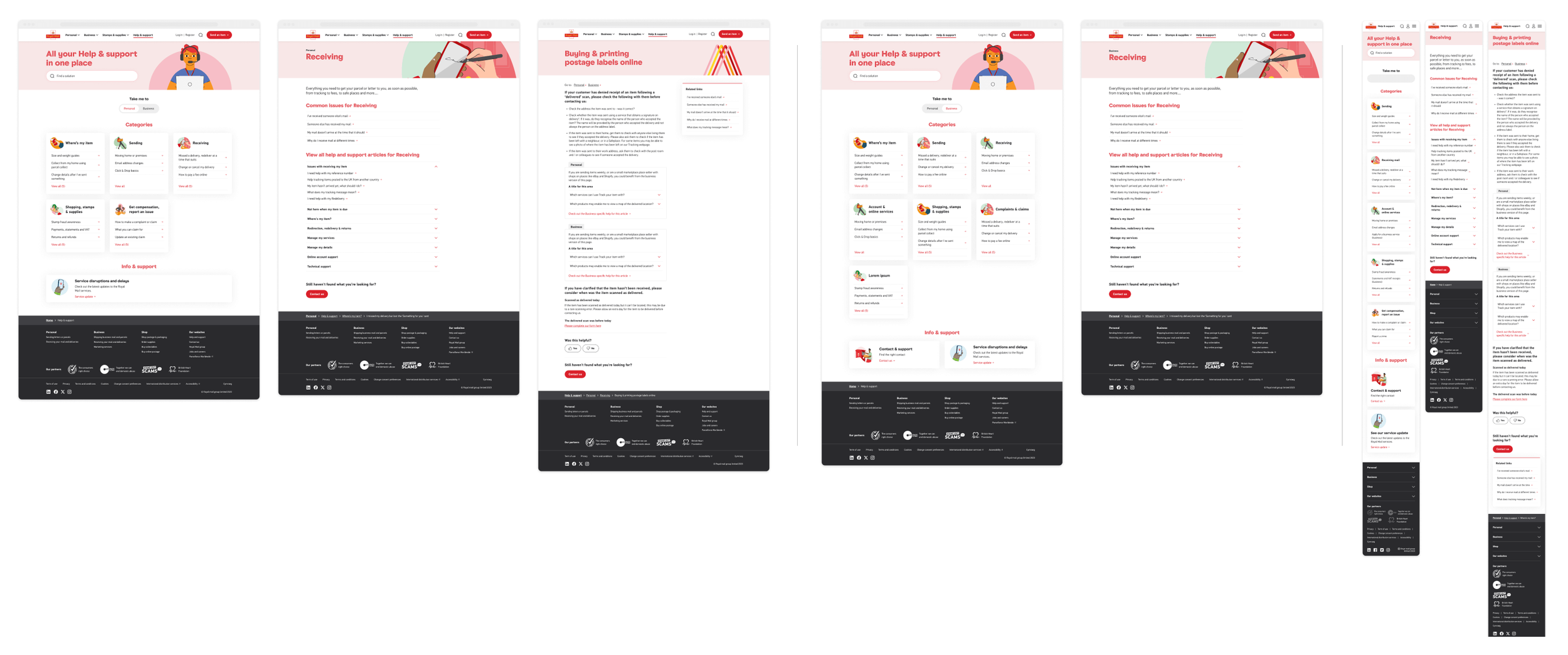Royal Mail Help & Support Re-platform
Shaping a new Help & Support experience on Salesforce. Balancing user needs with tight technical constraints to deliver clearer journeys and a centralised content hub.
History: Royal Mail’s Help & Support had become fragmented and outdated. Different teams were publishing their own pages, leading to duplicated content, inconsistent templates, and a confusing user experience. Maintaining content was slow and resource-heavy.
Brief: As part of Royal Mail’s move to Salesforce, the initial plan was to simply migrate the existing site design and structure (“lift and shift”). The design team saw this as an opportunity to rethink the experience, improving both usability and long-term maintainability.
Reality: The project had a tight timeline as the tech team had already begun scoping and building. We had to balance genuine user improvements against business and technical constraints, while managing stakeholder expectations. To do this, we mapped all existing content, ran IA workshops, tested card-sorting structures, and created multiple wireframe options to spark discussion around feasibility and ambition.
Result: Delivered a new centralised Help & Support area on Salesforce, with a single flexible template and clear content hierarchy. For users, this meant faster access to answers through simplified journeys. For Royal Mail, it created a scalable system, easier to manage with fewer templates and one team owning content.
My Role: Led workshops and IA mapping with stakeholders and content strategists. | Created wireframes and prototypes exploring multiple design directions. | Partnered with the UI designer to finalise visuals and component documentation. | Worked with the researcher to shape testing briefs and validate designs. | Aligned design, content, and development teams using a backcasting approach to define an achievable MVP.
Project Overview
Royal Mail’s Help & Support section had grown fragmented over time, with multiple teams publishing their own pages. This created duplicated content, inconsistent templates, and a confusing experience for users. At the same time, the business was moving to Salesforce, with an initial plan to “lift and shift” the existing site.
I worked with Royal Mail to turn this re-platform into an opportunity to improve the support experience — creating a single, centralised Help & Support hub that was clearer for customers and easier for the business to maintain.
Process
Discovery & Content Audit
Mapped all existing Help & Support content in Miro, uncovering duplication and inconsistent structures.
Ran card sorting to explore new ways of grouping information.
Used ChatGPT to generate a draft IA, which was refined with a content strategist to create a more logical structure.
Exploring Information Architecture
We presented multiple structural options: one closer to industry competitors and another more progressive, inspired by platforms like Airbnb with stronger search and filtering. These prototypes encouraged conversation around feasibility, ambition, and long-term scalability.
Wireframing, Prototyping & Usability testing
Built wireframes to visualise template needs and user journeys.
Explored different approaches to balancing self-service with guided support.
Used the prototypes to spark discussion with stakeholders and the tech team about what could be delivered without derailing the existing Salesforce build.
Leading a workshop to understand the assumptions and knowledge gaps the team had to help inform the usability testing before building teh prototypes and informing the researcher on what was required.
Content Hierarchy & Templates
Defined how article pages should be structured for clarity and consistency.
Worked with a content strategist to outline a set of flexible templates covering different content types.
Created clear visuals to explain our rationale and gather feedback quickly.
Worked with the UI designer to finalise page designs and document components ready to be added to the new design system.
Collaboration & Documentation
Documented all design rationale directly in Figma for transparency and easy handover.
Partnered with the researcher to shape a focused testing plan, ensuring we validated key assumptions.
Backcasting with Development
Because Salesforce work had already begun, I used a backcasting approach: aligning everyone on the long-term goal, then working backwards to shape what could realistically be delivered in an MVP. This kept the project moving while ensuring the design still addressed core user problems.
Outcome
For users: A single, centralised Help & Support hub with a clear structure and simplified journeys, making it easier to find answers quickly.
For Royal Mail: A more scalable, maintainable system with fewer templates and components, managed by one central team.
“Everyone I have met at EPAM has a customer first approach which really help to drive value for our business”
